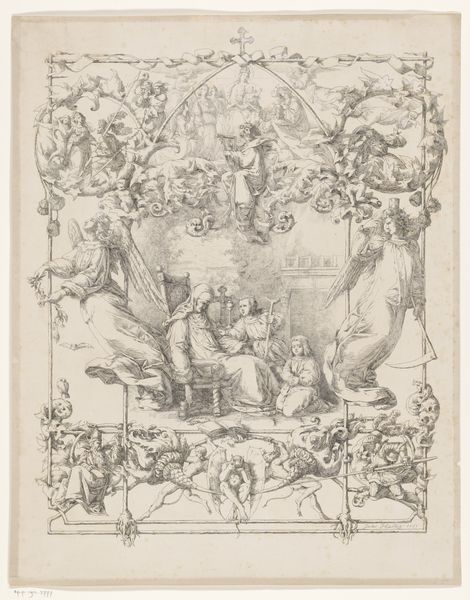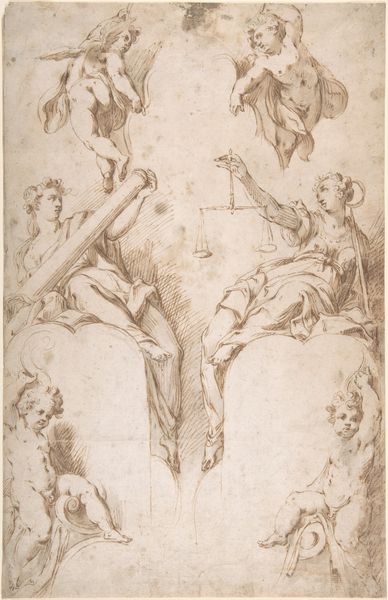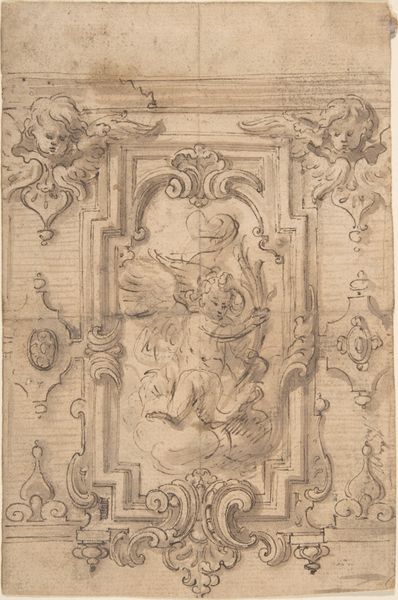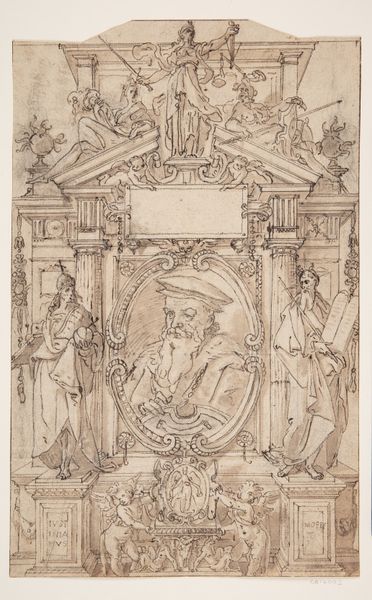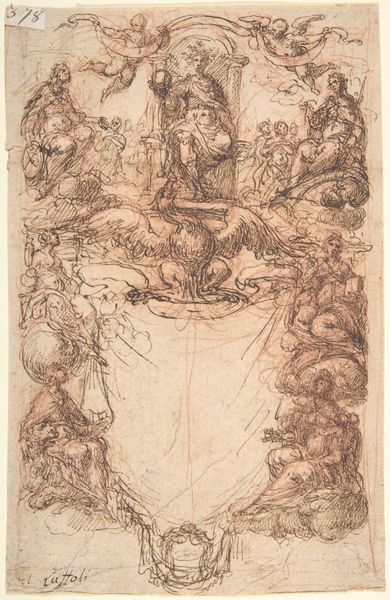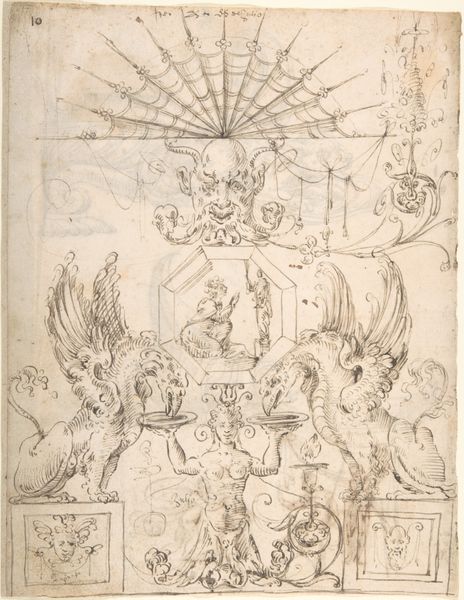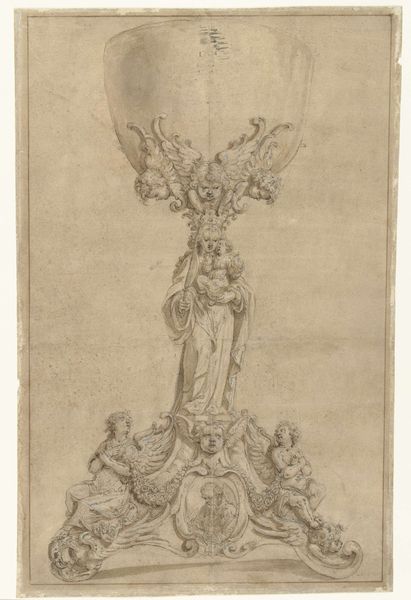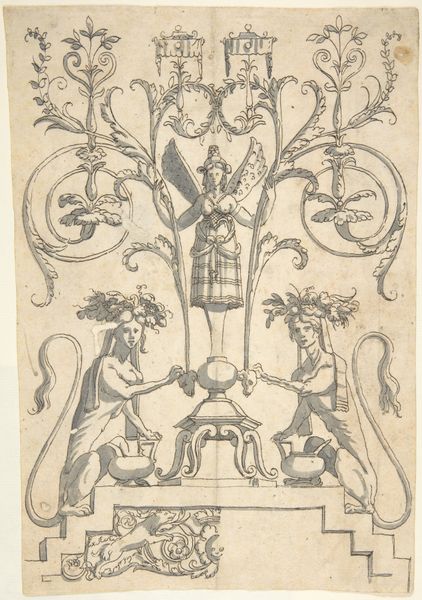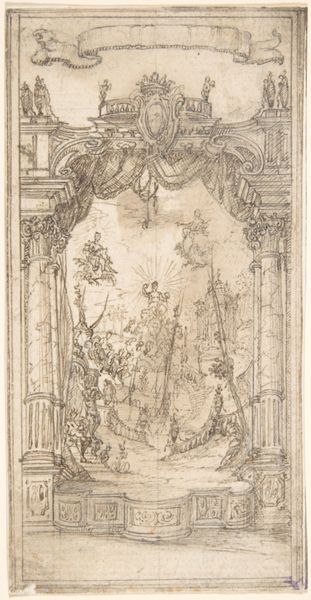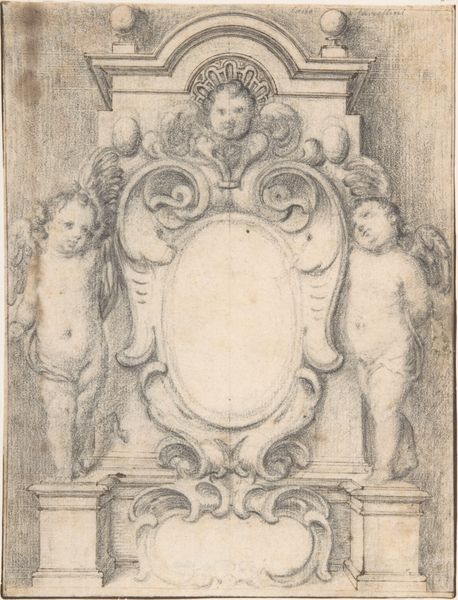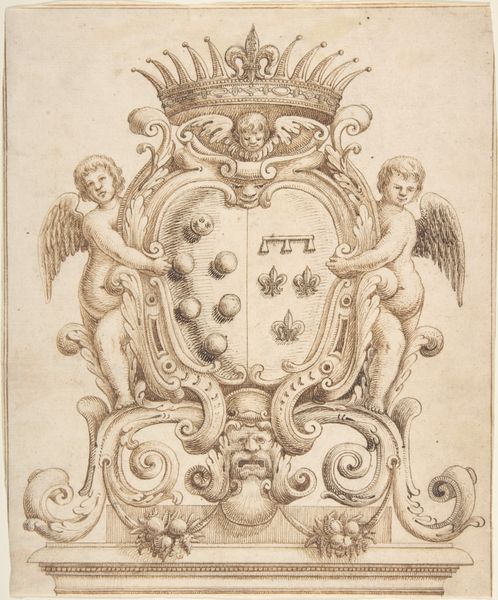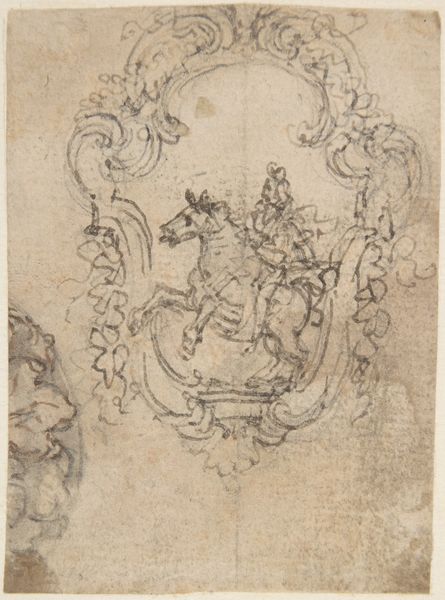
Drawing of Cartouche with Bearded Man Left, Young man crowned with Laurels Right, and Four Putti 1498 - 1561
0:00
0:00
drawing, print, etching
#
drawing
#
allegory
# print
#
etching
#
etching
#
mannerism
#
figuration
#
11_renaissance
#
men
#
italian-renaissance
Dimensions: 8 1/8 x 6 1/8in. (20.6 x 15.6cm)
Copyright: Public Domain
Curator: This intricate etching, dating from somewhere between 1498 and 1561, is attributed to Battista Franco. It's entitled "Drawing of Cartouche with Bearded Man Left, Young Man Crowned with Laurels Right, and Four Putti," currently held here at the Metropolitan Museum of Art. Editor: My first thought is just how densely packed it is. The eye barely has a place to rest, does it? There’s this constant interplay between figures and the decorative cartouche surrounding the central blank space. The material, the etched line, creates an interesting texture as well. Curator: It's true, it's very characteristic of the Mannerist style; you have to remember that printmaking served an essential function in the diffusion of artistic ideas at the time. Artists often used prints to circulate their designs to other workshops, influencing taste and style on a broader scale. Editor: The distribution makes sense in light of material limitations of artistic distribution, though. Considering it is an etching, one has to consider how many versions existed of this piece that may have seen modifications, degradation, or simply use the technology to mass-produce artwork. The figures themselves look incredibly posed, maybe meant as studies for a larger composition. Curator: Precisely, Battista Franco, while working in the circle of artists surrounding Raphael, definitely embraced the Mannerist aesthetic which dominated much of 16th-century artistic expression, although as the 16th century wore on, this approach came to seem extravagant and affected. I also read the male figures on each side almost as personifications of strength and wisdom or youth and honor, respectively. The empty cartouche might have been for personalized emblems later. Editor: Interesting to consider its usage of these poses later! Focusing on the figures: even in an etching you can sense the labor; all of those cross-hatched lines adding volume, the clear definition in the man’s beard. You are able to see, because of the etching and its style, just how important the detail and repetition becomes from the making of the artist's product itself. Curator: Well, hopefully, looking closer at Battista Franco's process offers visitors fresh ways of thinking about image making in 16th-century Europe and the development of this aesthetic. Editor: Indeed, understanding the material underpinnings emphasizes not just its beauty but the very means and method in its historical circulation and fabrication.
Comments
No comments
Be the first to comment and join the conversation on the ultimate creative platform.
